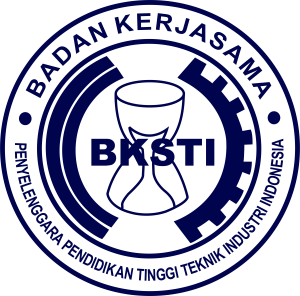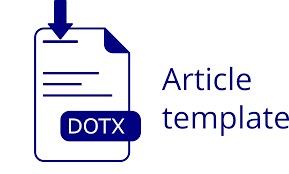Safety Risk Analysis Optimization Using Fuzzy: A Literature Review
DOI:
https://doi.org/10.37090/indstrk.v8i1.1341Abstract
Risk analysis is the procedure to identify risks to the surrounding environment, especially in the workplace. There are several methods for analyzing risk. Nowadays, many risk analysis methods are integrated with optimization methods, such as fuzzy. This approach is used to optimize the results of risk analysis. This study aims to investigate the development of collaboration between risk analysis methods and fuzzy in the industrial sector and research that can be carried out in the future. The authors collected 500 articles from Dimensions.ai between 2018 and 2023 and evaluated the references obtained with the bibliometric analysis tool. The authors analyzed the dataset obtained based on the countries that conducted the most research on safety risk analysis optimization and collaboration, themes that were widely used, the themes distribution, and the relationship between existing themes. The Results show that China has published many studies in collaboration with other countries. Research themes that use risk analysis methods are widely used in human assessment where it can be seen in the keywords. Currently, there has been a lot of research on risk assessment integrated with fuzzy and humans. For future research, fuzzy approaches and risk analysis can be integrated with other accident analysis methods.
Keywords: Bibliometric, Fuzzy, Literature Review, Risk Analysis, Risk Assessment
Downloads
References
Abbassinia, M., Kalatpour, O., Motamedzade, M., Soltanian, A., & Mohammadfam, I. (2020). Dynamic human error assessment in emergency using fuzzy bayesian cream. Journal of Research in Health Sciences, 20(1). https://doi.org/10.34172/jrhs.2020.03
Agusman, A., Prasetya, H. B., & Purba, H. H. (2021). Tinjauan dan Analisis Risiko dalam Proyek Konstruksi Bangunan: Studi Literatur. Jurnal Teknologi Dan Manajemen, 19(2), 41–52. https://doi.org/10.52330/jtm.v19i2.29
Aria, M., & Cuccurullo, C. (2017). bibliometrix: An R-tool for comprehensive science mapping analysis. Journal of Informetrics, 11(4), 959–975. https://doi.org/10.1016/j.joi.2017.08.007
Armenta-Medina, D., Ramirez-Delreal, T. A., Villanueva-Vásquez, D., & Mejia-Aguirre, C. (2020). Trends on advanced information and communication technologies for improving agricultural productivities: A bibliometric analysis. Agronomy, 10(12). https://doi.org/10.3390/agronomy10121989
Aufarisza, A., Sandora, R., & Asri, P. (2017). Analisis Risiko Pekerjaan Pemindahan Barang Dengan Forklift Menggunakan Metode HIRARC Dan Penentuan Risk Ranking Menggunakan Fuzzy Logic Control (Studi Kasus : Pada Perusahaan Distributor Minuman). Proceeding 1st
Conference on Safety Engineering and Its Application.
Australian/New Zealand Standard. (2004). Risk management. Standards Australia International Ltd. www.standards.co.nz
Bertoglio, R., Corbo, C., Renga, F. M., & Matteucci, M. (2021). The Digital Agricultural Revolution: A Bibliometric Analysis Literature Review. In IEEE Access (Vol. 9, pp. 134762–134782). Institute of Electrical and Electronics Engineers Inc. https://doi.org/10.1109/ACCESS.2021.3115258
Ericson, C. A. (2005). Hazard Analysis Techniques for System Safety. In Hazard Analysis Techniques for System Safety (pp. 1–12). John Wiley & Sons Inc. https://doi.org/10.1002/0471739421.ch1
Friyandary, B., Ihsan, T., & Lestari, R. A. (2020). Kajian Literatur Analisis Risiko Keselamatan Kerja dengan Metode Kualitatif pada Proyek Konstruksi di Indonesia: Sebuah Review. MEDIA KESEHATAN MASYARAKAT INDONESIA, 19(5), 331–344. https://doi.org/10.14710/mkmi.19.5.331-344
Jabbari, M., Gholamnia, R., Esmaeili, R., Kouhpaee, H., & Pourtaghi, G. (2021). Risk assessment of fire, explosion and release of toxic gas of Siri–Assalouyeh sour gas pipeline using fuzzy analytical hierarchy process. Heliyon, 7(8). https://doi.org/10.1016/j.heliyon.2021.e07835
Karimie, S., Mirzaei Aliabadie, M., & Mohammadfam, I. (2018). Human Errors Assessment for Board Man in a Control Room of Petrochemical Industrial Companies using the extended CREAM method. In Journal of Health in the Field (Vol. 6, Issue 1).
Luis Aleixandre-Tudó, J., Castelló-Cogollos, L., Luis Aleixandre, J., & Aleixandre-Benavent, R. (2018). Bibliometric and social network analysis in scientific research on precision agriculture. CURRENT SCIENCE, 115(9).
Maditati, D. R., Munim, Z. H., Schramm, H. J., & Kummer, S. (2018). A review of green supply chain management: From bibliometric analysis to a conceptual framework and future research directions. In Resources, Conservation and Recycling (Vol. 139, pp. 150–162). Elsevier B.V. https://doi.org/10.1016/j.resconrec.2018.08.004
Magda, S., Yustiarini, D., & Nurasiyah, S. (2023). Literature Review: Analysis of Potential Work Accidents in Construction Projects Using the Hazard Identification, Risk Assessment, and Risk Control Method. Jurnal Ilmiah Pendidikan Teknik Dan Kejuruan, 16(1), 62. https://doi.org/10.20961/jiptek.v16i1.67763
Mandal, S., & Maiti, J. (2014). Risk analysis using FMEA: Fuzzy similarity value and possibility theory based approach. Expert Systems with Applications, 41(7), 3527–3537. https://doi.org/10.1016/j.eswa.2013.10.058
Mutlu, N. G., & Altuntas, S. (2019). Risk analysis for occupational safety and health in the textile industry: Integration of FMEA, FTA, and BIFPET methods. International Journal of Industrial Ergonomics, 72, 222–240. https://doi.org/10.1016/j.ergon.2019.05.013
Rafieyan, A., Sarvari, H., & Chan, D. W. M. (2022). Identifying and Evaluating the Essential Factors Affecting the Incidence of Site Accidents Caused by Human Errors in Industrial Parks Construction Projects. International Journal of Environmental Research and Public Health, 19(16). https://doi.org/10.3390/ijerph191610209
Raparelli, E., & Bajocco, S. (2019). A bibliometric analysis on the use of unmanned aerial vehicles in agricultural and forestry studies. International Journal of Remote Sensing, 40(24), 9070–9083. https://doi.org/10.1080/01431161.2019.1569793
Surya, P. A., Mustikaningtyas, M. H., Thirafi, S. Z. T., Pramitha, A. D., Mahdy, L. T., Munthe, G. M., Dwiantoro, A. C., & Budiono. (2021). Literature Review: Occupational Safety and Health Risk Factors of Healthcare Workers during COVID-19 Pandemic. In Indonesian Journal of Occupational Safety and Health (Vol. 10, Issue 1, pp. 144–152). Airlangga University Faculty of Public Health. https://doi.org/10.20473/ijosh.v10i1.2021.144-152
Wessiani, N. A., & Sarwoko, S. O. (2015). Risk Analysis of Poultry Feed Production Using Fuzzy FMEA. Procedia Manufacturing, 4, 270–281. https://doi.org/10.1016/j.promfg.2015.11.041
Wessiani, N. A., & Yoshio, F. (2018). Failure mode effect analysis and fault tree analysis as a combined methodology in risk management. IOP Conference Series: Materials Science and Engineering, 337(1). https://doi.org/10.1088/1757-899X/337/1/012033
Yang, Z., & Wang, J. (2015). Use of Fuzzy Risk Assessment in FMEA of Offshore Engineering Systems. LJMU Research Online, 95, 195–204. https://researchonline.ljmu.ac.uk/id/eprint/1152/
Zhou, Q., Wong, Y. D., Loh, H. S., & Yuen, K. F. (2018). A fuzzy and Bayesian network CREAM model for human reliability analysis – The case of tanker shipping. Safety Science, 105, 149–157. https://doi.org/10.1016/j.ssci.2018.02.011
Zupic, I., & Čater, T. (2015). Bibliometric Methods in Management and Organization. Organizational Research Methods, 18(3), 429–472. https://doi.org/10.1177/1094428114562629
Downloads
Published
Issue
Section
License

This work is licensed under a Creative Commons Attribution-ShareAlike 4.0 International License.









